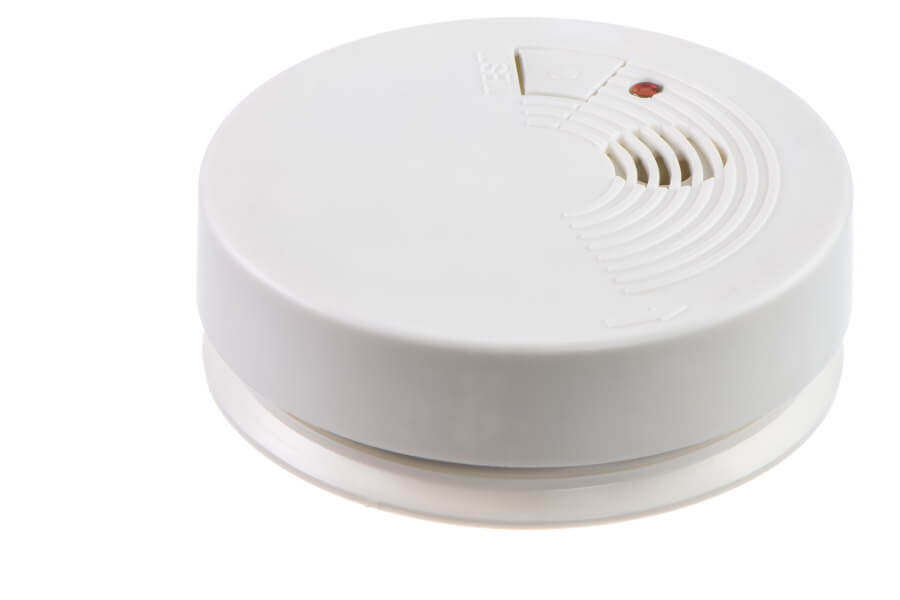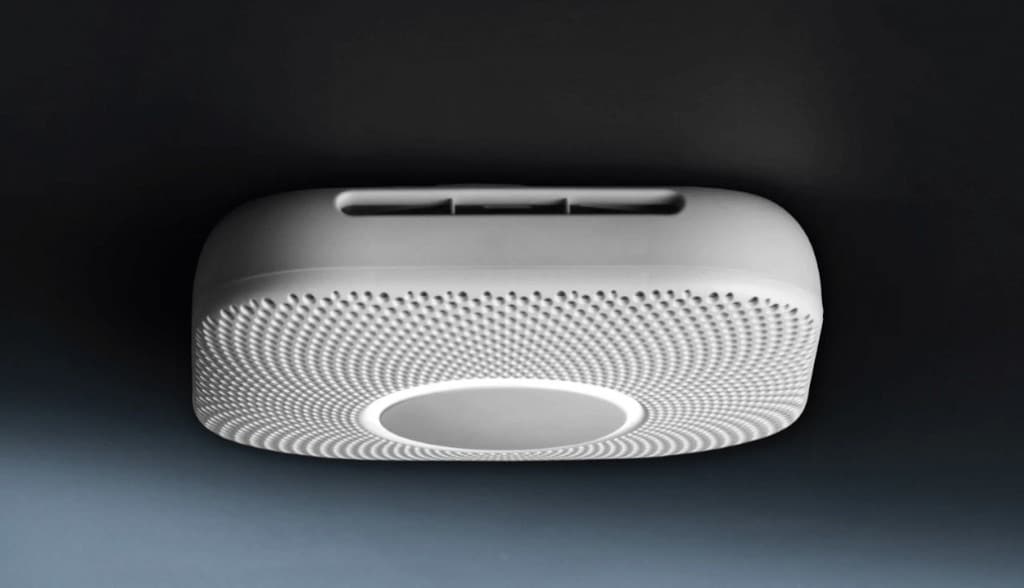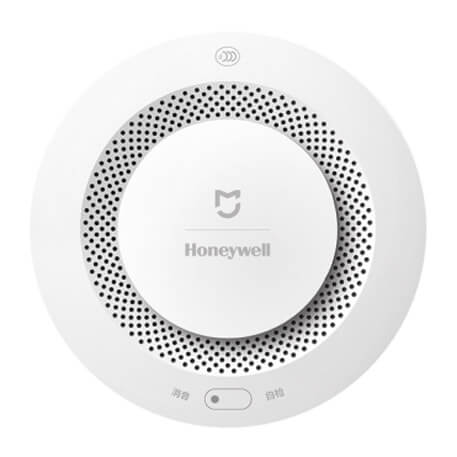
The necessity of Interconnected Smoke Alarms
Advantages of Wireless Smoke Alarms
Easy Installation & Maintenance
Wireless smoke alarms are quick and easy to install. They either bolt or stick to the ceiling, so you’re done in a matter of minutes. In contrast, wired smoke alarms require professional installation.
Maintenance is quick and easy for the same reason. When performing maintenance on a wired smoke alarm, you must switch off the main power supply and preferably have a professional do the actual work. On the other hand, you can do maintenance on a wireless smoke detector yourself, usually through the accompanying app.
It’s Cheaper
It’s far easier to interconnect wireless smoke alarms than their traditional hardwired counterparts. Interconnecting hardwired smoke alarm systems are potentially expensive since it usually requires costly retrofitting that only trained professionals can do.
You can interconnect wireless smoke alarms yourself, using the accompanying app or other user-friendly methods, depending on the model you chose. You save twice: first on the expensive professional call-out, second on the hardware needed for interconnection.
Greater Coverage
Battery Operated
They're Smart
Some of the newer wireless smoke alarms come with voice and location alerts. When the alarm sounds, it notifies you which unit detected the smoke and the nature of the emergency. In this way, you know where the danger is and how serious it is, enabling you to react quickly and appropriately.
Wireless smoke alarms connect to your home wifi network – that’s how they interconnect with each other. This connectivity allows the smoke alarm to connect with your phone as well, alerting you the moment one of your units detect smoke. So, even if you’re not at home, you will know where the danger is and how serious it is. Here, you can react immediately, saving lives and minimizing damage to your property.
If you have a smart home, this is even more useful, since you could trigger emergency measures from anywhere in the world.
Options for Wireless Smoke Alarms
Google Nest
This is our top option. As part of Google’s Smart Home innovations, Google Nest smoke alarms interconnect seamlessly. Here, you could either install wired or battery-operated units. All their models use wifi to connect through a protocol called Weave.
Weave is a smart hybrid, using direct connections and using your home wifi network interchangeably. If your home wifi network is available, your smoke alarms will connect to this, allowing you access to the units from anywhere in the world. If for any reason, your home wifi network is unavailable, the Google Nest units will connect using dedicated low-powered wifi signals. So, your units will continue functioning together, even if your wifi is disconnected. On a practical level, you have the benefit of interconnected smoke alarms under all circumstances.
If one of your Google Nest smoke alarms detect smoke or carbon monoxide, all units will sound the alarm, after first indicating the location of the emergency. In other words, it will physically tell you, “smoke detected in the kitchen” before the alarm goes off.
The video below explains how it works quite nicely. It’s worth watching if you’re at all interested in Google Nest Protect. Even if you’re just hear wondering, what makes a smart smoke alarm different from a normal one, this is the video for you.The Google Nest Protect does so much more than you’d image.
Honeywell
Honeywell offers top-notch smoke alarms with a built-in wireless transmitter. These connect to your home wifi receiver and have an impressive range of functions. They also eliminate nuisance alarms by using a smoothing algorithm. This algorithm smooths out short-term spikes from smoke and dust, which would trigger many other smoke alarms currently on the market.
Information on alarm signals, tampering, maintenance, and battery conditions get sent directly to your connected device. The Smart Check feature even tells you when to clean your smoke alarm.
Honeywell smoke detectors are quick and easy to install, even on difficult surfaces, like stucco. A sturdy mounting base allows for installation in any location you require.
Xiaomi
Xiaomi collaborated with Honeywell to create a smart smoke alarm with advanced wifi capability. This product integrates seamlessly with other Xiaomi intelligent home systems.
The Xiaomi smoke alarm doesn’t connect directly to your home wifi network. Instead, it connects with a Xiaomi gateway device – part of their smart home solutions. If you already have a gateway device, linking your new smoke alarm is quick and straightforward, using the Xiaomi Mi Home app. Here, device settings allow you to specify the device location (kitchen, bedroom, etc.) – this allows the unit to indicate the location where smoke is detected.
When the Xiaomi smoke alarm detects smoke, it sends a message directly to your smartphone, tablet, or other connected devices, using the Xiaomi Mi Home app. You can also set up some automation rules on the app. For example, when the smoke detector sounds the alarm, turn on all the lights in the house. In the device settings, you can specify whether you expect any levels of smoke in the installation location. For example, there is bound to be some smoke in the kitchen, while a no-smoking office environment should have none. These settings automatically adjust the alarm’s sensitivity settings, minimizing nuisance alarms.
A self-check, activated on the app, checks all alarm settings and notifies you of any errors found. You have to initiate the self-check manually, although the app allows you to set a reminder for this. Additionally, the app keeps a log of all events logged by your smoke detector, which could be useful in the long run.
Quell
Quell offers a range of wireless interconnected smoke alarms that are quick and easy to install. These alarms designed with specific locations in mind – kitchen, living room, bedroom, and hallway – adjusting the sensitivity according to the target location. This sensitivity adjustment minimized nuisance alarms.
All Quell alarms come with a 10-year battery already installed. Since smoke alarms must be replaced every ten years, this battery lasts the entire lifetime of the device – you never have to worry about replacing it. These alarms interconnect seamlessly, so when one unit detects smoke, all the alarms in your home will sound. It won’t tell you where the smoke was detected, however.
Last Comments On Wireless Smoke Alarms
Interconnected smoke alarms are safer than the traditional alternative, offering you peace of mind in the event of a house fire or similar emergency. Installing and interconnecting wireless smoke alarms are far easier and less expensive than the hardwired alternative. Wireless smoke alarms offer a wide range of advantages over their hardwired counterparts, one of which is smart home solutions.
When you choose smart wireless smoke alarms, they link up to your other smart home solutions. Now, all aspects of your home are integrated into one central location. Smart home integration is the way of the future – contact us for more information on smart home solutions that suit your lifestyle and budget.
Links
Google: Learn why interconnected smoke alarms are better than standalone smoke alarms
When smoke and carbon monoxide (CO) alarms are interconnected, each alarm can now tell you when there’s smoke or carbon monoxide in any room that has a smoke/CO alarm...
First Alert: Benefits of Interconnected Smoke Alarms
There are many different types of smoke alarms for your home. For a whole home coverage, we recommend that you install interconnected smoke alarms...
Google: Learn about Wireless Interconnect
Google Nest Protect’s Wireless Interconnect allows all Nest Protects to talk to one another, letting you know what’s happening in other parts of the house during an alert or Emergency Alarm...
Honeywell: 5808W3
Honeywell’s 5808W3 is a 3V lithium powered, photoelectronic smoke/heat detector with a built-in wireless transmitter...
Quell: Wireless Interconnect Smoke Alarm – Living Area
The range of Quell Wireless Smoke Alarms feature voice alert and wireless interconnectivity.Powered by a 10-year battery that lasts the life of the alarm, no battery installation or replacement is necessary...



